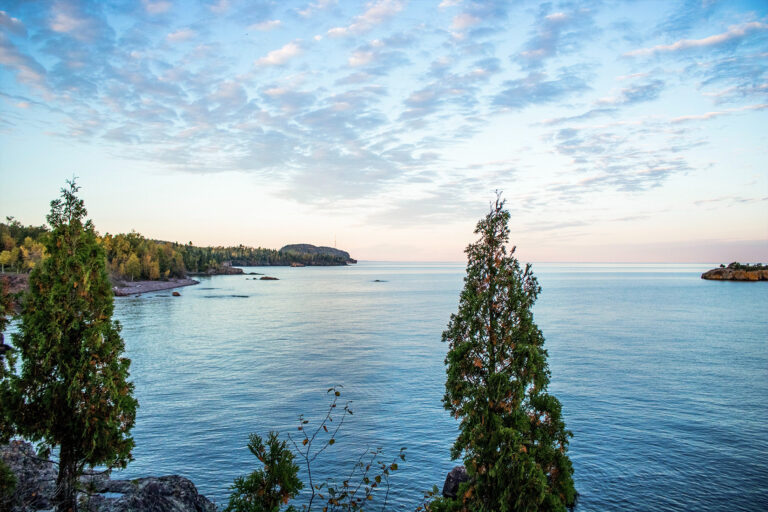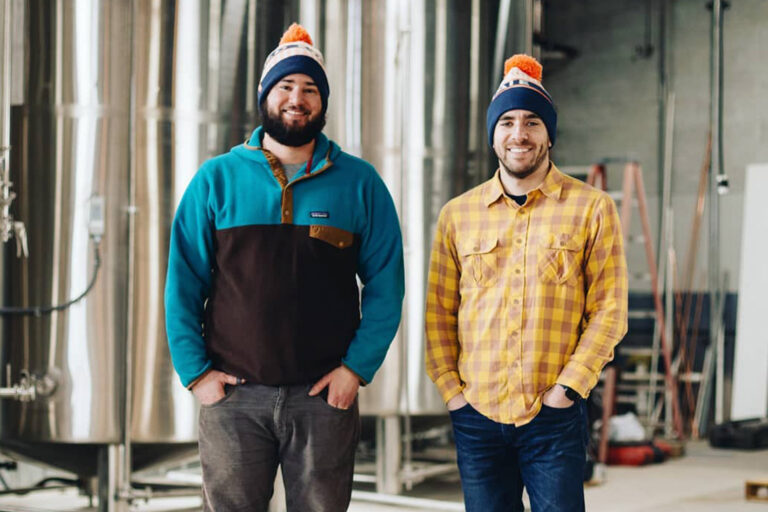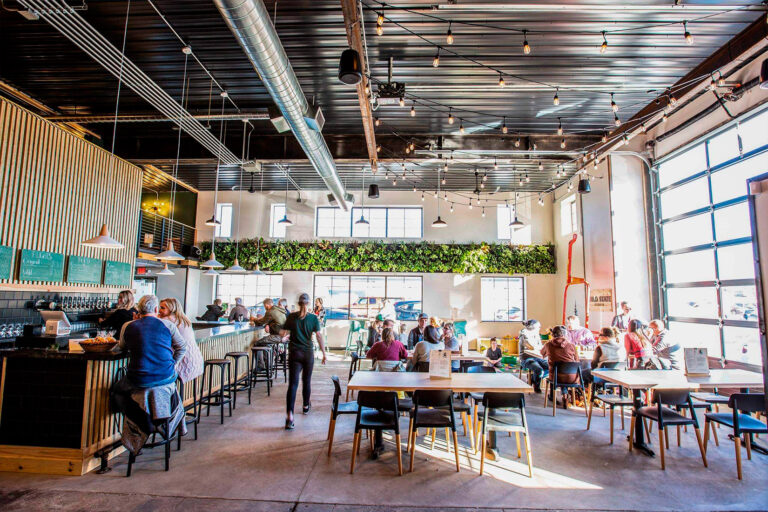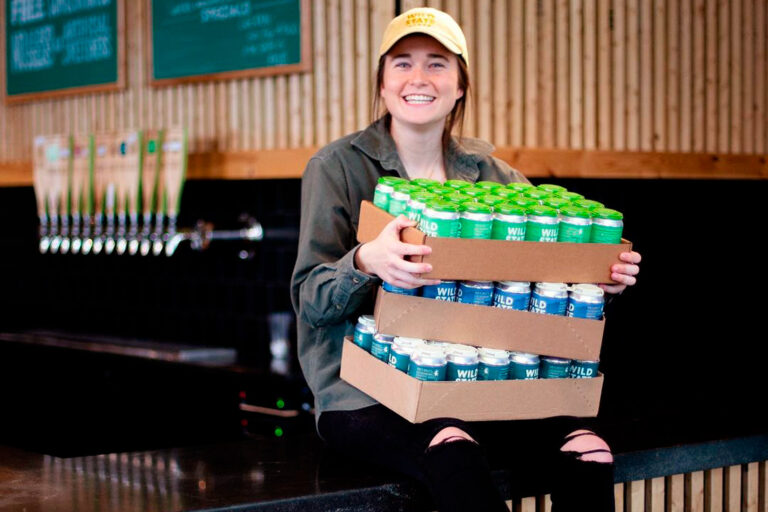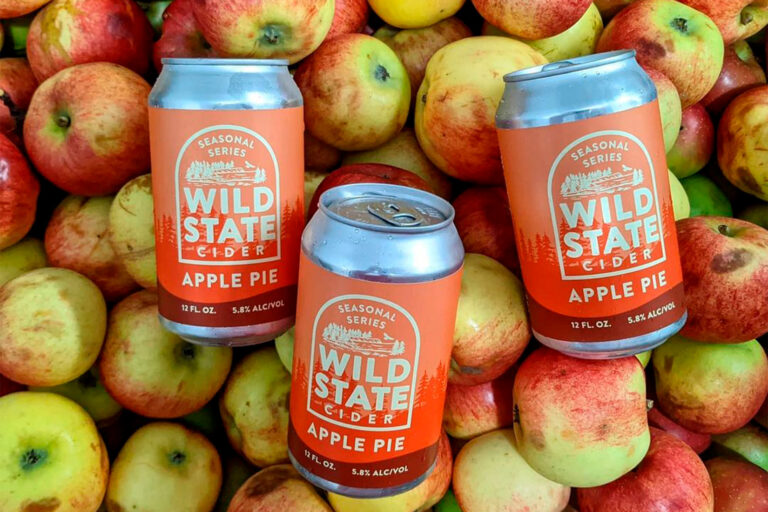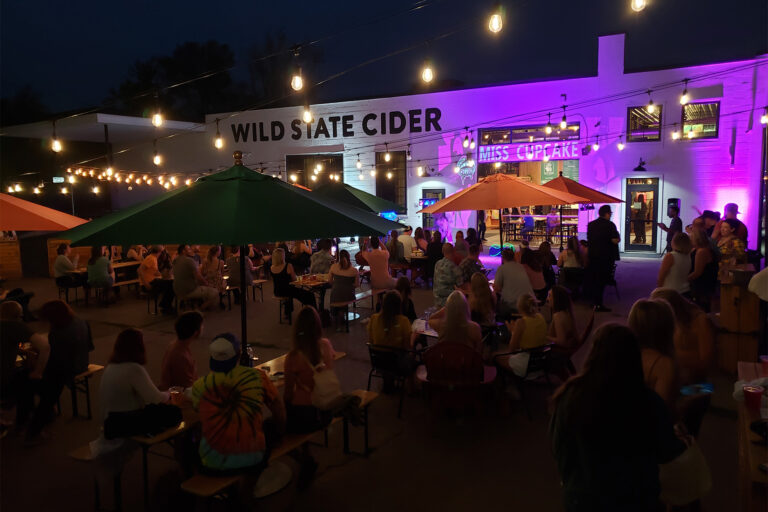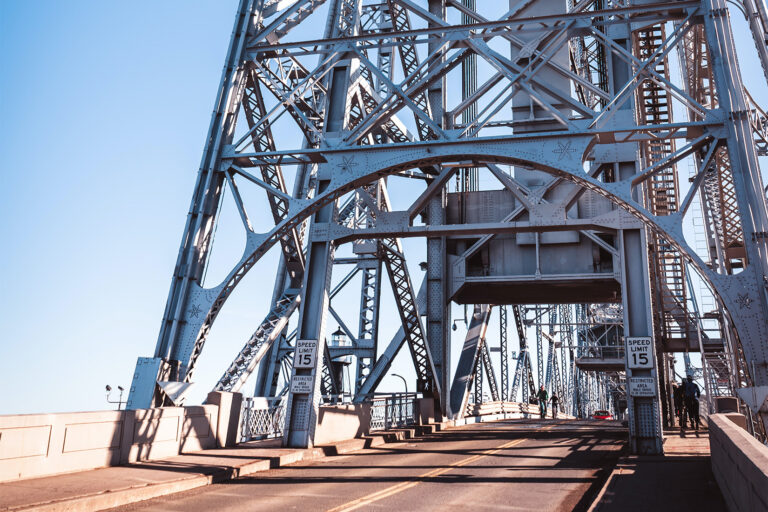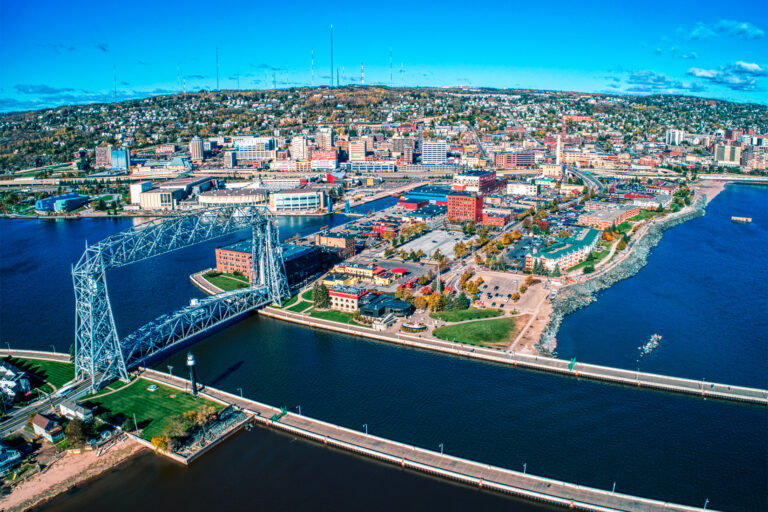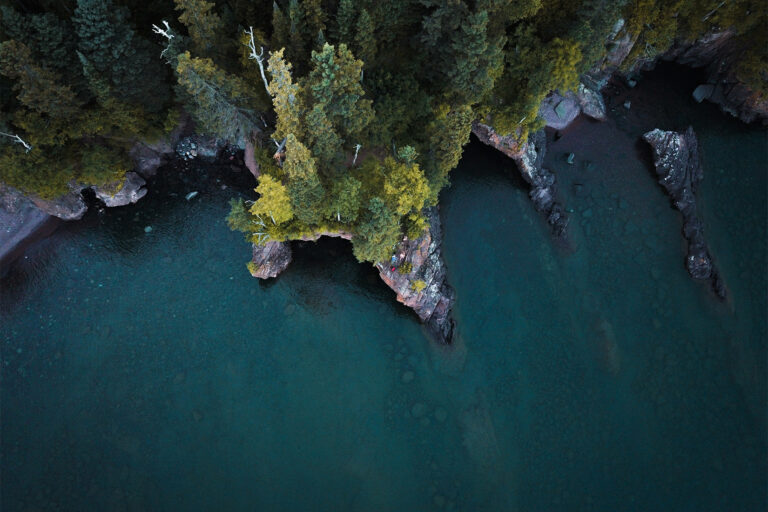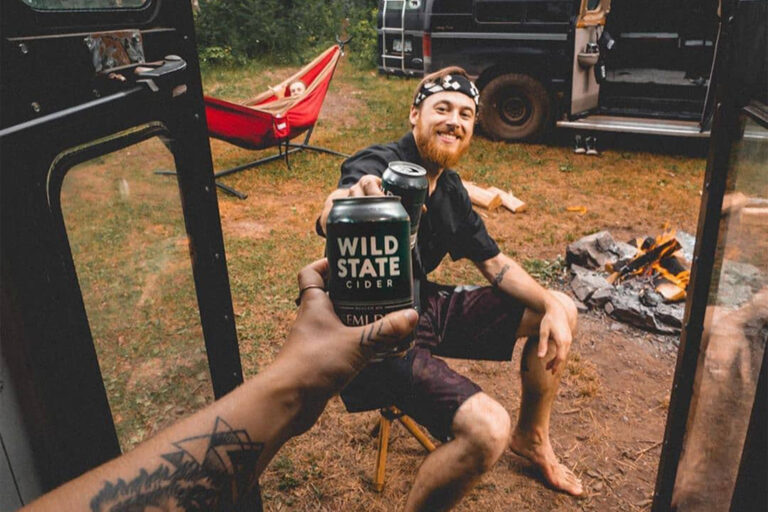
Hacking our way up the highways, we press upriver—where they say Paul Bunyan made the Mississippi by emptying a pan of dishwater. Like Bunyan himself, the state of Minnesota looms large. Covered with dense green forests and filled with over 10,000 lakes—14,380 by some counts—the North Star State borders one lake that is greater than them all: Lake Superior. Holding 10 percent of the world’s fresh surface water and more than 80 species of fish, Lake Superior is an outdoor playground of epic proportions. In fact, it’s an embodiment of the region. You see, the land of the lakes is a land of legends. And legends, like RVers, make their own way

Clearing a New Path
You could say that Adam Ruhland had an ax to grind—with subpar cider. In the alcoholic beverage industry, cider has a reputation for being candy-like. And artificial. And generally not the kind of drink that merits a second round. But Adam felt like the market was ready for a better kind of cider. The kind that nobody was yet making. Something drier and cleaner. Truer and more natural—without the training wheels of added sugar and concentrate. And when Adam met Andrew Price, a Minnesota native already in the brewing industry, the two men decided to cut their own path in Duluth, Minnesota. Starting Wild State Cider in 2018, and opening in 2019, the tandem immediately bucked industry trends, with flourishes of champagne yeast and flavor infusions of hops—to name just a few innovations. “In the taproom, at any given time, there’s probably 20 options which we have on site,” Adam says. “There’s always something new.”
Left: Andrew Price, Right: Adam Ruhland
Now, in their third year, Wild State Cider is the second largest producer of cider in that span. Today, sold in five other states and employing a team of 27, Wild State is blazing a new trail for cider, cutting a broad path in a less defined industry.
To be sure, something unique is happening on the westernmost shore of Lake Superior. And that something is what attracted the attention of Harvest Hosts. After all, from the beginning, Harvest Host CEO Joel Holland had his own ax to grind with an age-old, RV-pilot dilemma: Visit any brewery, winery, or cidery and someone is not gonna be doing the tasting (i.e., the driver). As an RV enthusiast himself, he and his wife had the unsatisfying experience of continually having to draw the proverbial straw. Which felt dumb. There had to be a better way for campers to enjoy the fruit of their travels, be that in glasses or pints. Today, Harvest Hosts has carved a wide path, giving over 180,000 members access to over 3,145 unique hosts across the country. For just $99 a year.
Which means unique venues like Wild State Cider do more than keep the doors open for RV travelers: They look for them.
Descending from I-35’s elevated northbound path, with the full weight of your rig or trailer behind you, Duluth slopes down to the greatest of North American lakes. Rippling with dark blue muscle, the surface of Lake Superior extends into the broad horizon with the majesty of an inland sea. Just two and a half hours north of the Twin Cities, you’ll hit the off ramp at Exit 254 onto South 27th Avenue West. A quick right turn onto West Superior Drive puts Wild State Cider on your driver’s side.
In a parking lot adjacent to their patio, Wild State Cider keeps two spots reserved for Harvest Host members who call in. During the winter months, the patio doubles as a curling sheet and, in warmer months, converts into a stage with lights for music performers. Walking through the doors of the cidery, visitors face a long bar. To the right, over 200 live plants hang on the wall, enjoying the floorplan’s openness and natural light. In fact, the entire vibe brings the outdoors in. Vertical structural elements harken to Scandinavian roots. A ski-lift chair sits against the front wall. And road-weary travelers can expect to be greeted by a bartender, who is going to offer you a flight of five 5 oz. pours. (Accept that offer, friend.) Sitting down, to the left, the enormous production tanks tower beneath an elevated ceiling, giving you an idea just how big they are. Upstairs behind the bar, there’s even a four- to eight-person mezzanine.
“You can kinda tell which kind of person someone is by their RV. Like the level of comfort they’re seeking or the amount of adventure they’re after.”
Adam admits that Wild State’s bartenders share a particular love for their RV guests. For their stories from the road. Or even for the occasional RV tour that some campers offer. The team sees an incredible range of people and RVs. Adam laughs, “You can kinda tell which kind of person someone is by their RV. Like the level of comfort they’re seeking or the amount of adventure they’re after.”
Maybe it’s a situation of like recognizing like. After all, there’s a kindred among pioneers, way finders, and trailblazers. Because when you’ve cut your own path, you instinctively recognize someone else who’s doing the same.
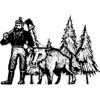
Exploring a Giant Footprint
Legend says that Minnesota’s 10,000 plus lakes are simply the footprints of Paul Bunyan and his blue ox. Whatever the origin, glaciers or giants, Duluth puts you in prime position to explore Lake Superior.
From the cidery itself, in an area called Lincoln Park, you’re a half-mile walk away from the lake shore—amid a vibrant collection of breweries, cideries (yes, there’s more than one), restaurants, and coffee shops. Just two minutes from Wild State, there’s Ursa Minor Brewing, who also makes a mean wood-fired pizza. But Adam confesses his favorite is Corktown Deli, whose meat comes fresh from the vaunted OMC Smokehouse. At the cidery, they have their own menu, but Adam insists they have no problem with customers bringing in outside orders. Really, he says, the only thing not in the Lincoln Park area is a good grocery market.
The lake itself suffers no lack of commerce. In Canal Park, Duluth’s iconic Aerial Lift Bridge—one of the few in America—can even be raised to 135 feet in under a minute to let colossal cargo ships pass below. It’s a captivating sight. Once the bridge is back down, you can cross over to Park Point and enjoy miles of lake walk on the world’s longest freshwater sandbar. Along the narrow strip, you’ll find distilleries, restaurants, and beautiful recreation areas with prime access to the lake. Circling back to the mainland, Duluth’s downtown waterfront offers great places to explore—especially for kids. The Great Lakes Aquarium has engaging exhibits that explore sunken shipwrecks and explain how watersheds work. Nearby, Bayfront Festival Park has a great playground, and hosts outdoor music performances in the warmer months.
Pushing beyond the city limits, U.S. Highway 61 North follows the lakeshore, leading you all the way up Canada. Along the way, there’s a lot of fun local shops, a lot of state parks, and no billboards allowed. Taking a two-hour day trip, you’ll reach Grand Marais, a little town on the water. Proclaimed America’s Coolest Small Town by Budget Travel Magazine, Grand Marais is full of arts and crafts, great food and grand views.
This is the allure of the northern adventure: Getting away from development is all too easy. Grand Marais is bracketed by the Sawtooth Mountains and Lake Superior. Inland lakes are everywhere. Duluth itself is the starting point for the long-distance Superior Hiking Trail that goes 269 miles all the way up to Canada. (You can also do it in sections if you lack Bunyan’s 7-foot strides.) Over 40 miles of mountain bike trails wind their way out of the city. And that’s just if you push inland. The lake itself is a freshwater playground for kayaks, canoes, and fisherman. While there are a lot of fish in Lake Superior, Adam says, just don’t fish with Andrew. Although Andrew is a man of many talents, fishing is apparently not one of them. But perhaps you can afford to not be the king of fly fishing when you’re the master of flights.
Below: The Aerial Lift Bridge is a Lake Superior icon, and a tremendous sight for locals and travelers alike.
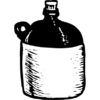
Making an Unruly Cider
Andrew Price knows his craft. A self-professed beer guy, his cider skills began to be forged in the hop-rich training ground of breweries. But the process of making cider is uniquely its own. In an attempt to put what Andrew does in layman’s terms, Adam breaks it down like this: “The simplest thing to say is that it’s made like wine and packaged like beer. In brewing, you’re heating something up and cooking. And then you ferment after that. In cider, you start with the fermentation and then you blend things together afterward. So we get a tanker load—you know, 5,000 gallons of apple juice—and we ferment that for ten days in our tanks. Then we take that alcoholic base and start to blend that with other things to create all our different styles. So we might put it in a barrel, or we might mix raspberry hibiscus with it. We might put hops in it; we may filter it; we may leave it cloudy. We might add some juice to sweeten it. Once blending is done, we carbonate it, put it in aluminum cans, and sell it in four packs.”
There’s a lot of experimentation, because cider does not have the standard varieties common to beer or wine. There’s no IPA equivalent. There’s no shiraz or cabernet of cider (although Wild State’s Classic Dry does have a nice touch of champagne yeast).
In Cider Knowledge
Wild State Cider is always innovating new ciders, including seasonal varieties and limited releases. But these four flagship ciders are Wild State at its core.
Classic Dry
Perfectly dry, champagne-like
6.9% ABV

Semi Dry
Crisp, floral, semi dry
6.1% ABV
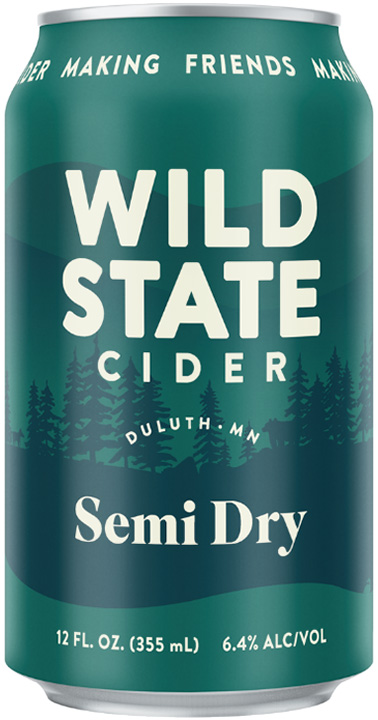
Pear
Juicy, WA pears, refreshing, sweet
5.6% ABV
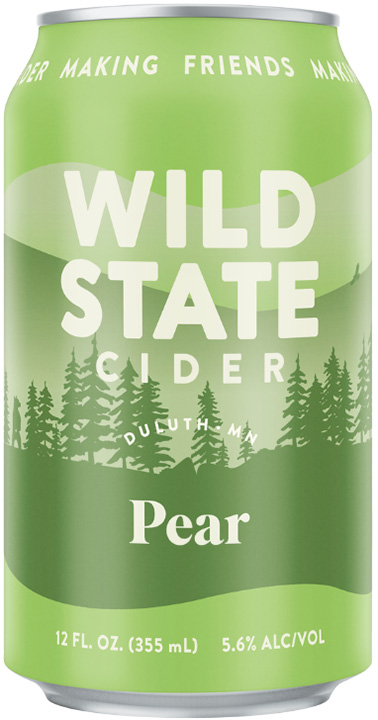
Raspberry Hibiscus
Fresh berry, hibiscus tea, semi dry
6.5% ABV
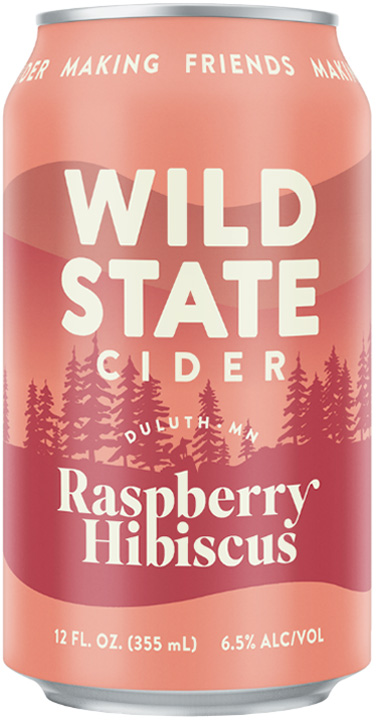
Adam explains, “Customers don’t know what to expect because cider is such an unknown category. It’s small, still relatively new. There are no rules that you have to follow. It’s not like if you make an IPA and someone’s like, ‘This isn’t true to the style.’ In cider, there’s really not a lot of standardization.” Yet. In the meantime, Wild State Cider keeps forging ahead.
“Cider is such an unknown category. It’s small, still relatively new. There are no rules that you have to follow.”
One rule that remains is the standard that Adam and Andrew set themselves: Cider should be natural and free. “Our biggest claim to fame is that we just use apples,” Adam says. “We never use a concentrate or add sugar. So it’s just a very true, drier style.” And while Wild State has lots of styles, Classic Dry from their core group of flagship ciders remains their top seller. It also happens to be Adam’s favorite— proof that a better kind of cider not only exists, but is actually preferred.
Here, on the northern edge of the country, what is natural is free to make its distinct mark. Where legends can grow even greater with time. Pressed down, mashed, wrung, distilled, and fermented—the bright aftertaste of making your own path is always worth the struggle. To smell fresh air in a land of lockdown. To see sights too immense for any screen. To taste a cider no one thought was possible. To open a host of doors for campers across the country. Not everyone is able to do these things and brave the unknown. But we do—because we go. Guided by our true north, our road knows no limit. It admits no rules. And nothing but a year of two winters will slow us down.
Learn more about Wild State Cider and see what’s on tap at WildStateCider/com/Ciders.
And check out Harvest Hosts— the "hosts with the most!" Become a Harvest Hosts member with unlimited overnight stays at unique locations across the country. (So everyone can enjoy that flight.) Learn more at HarvestHosts.com.


